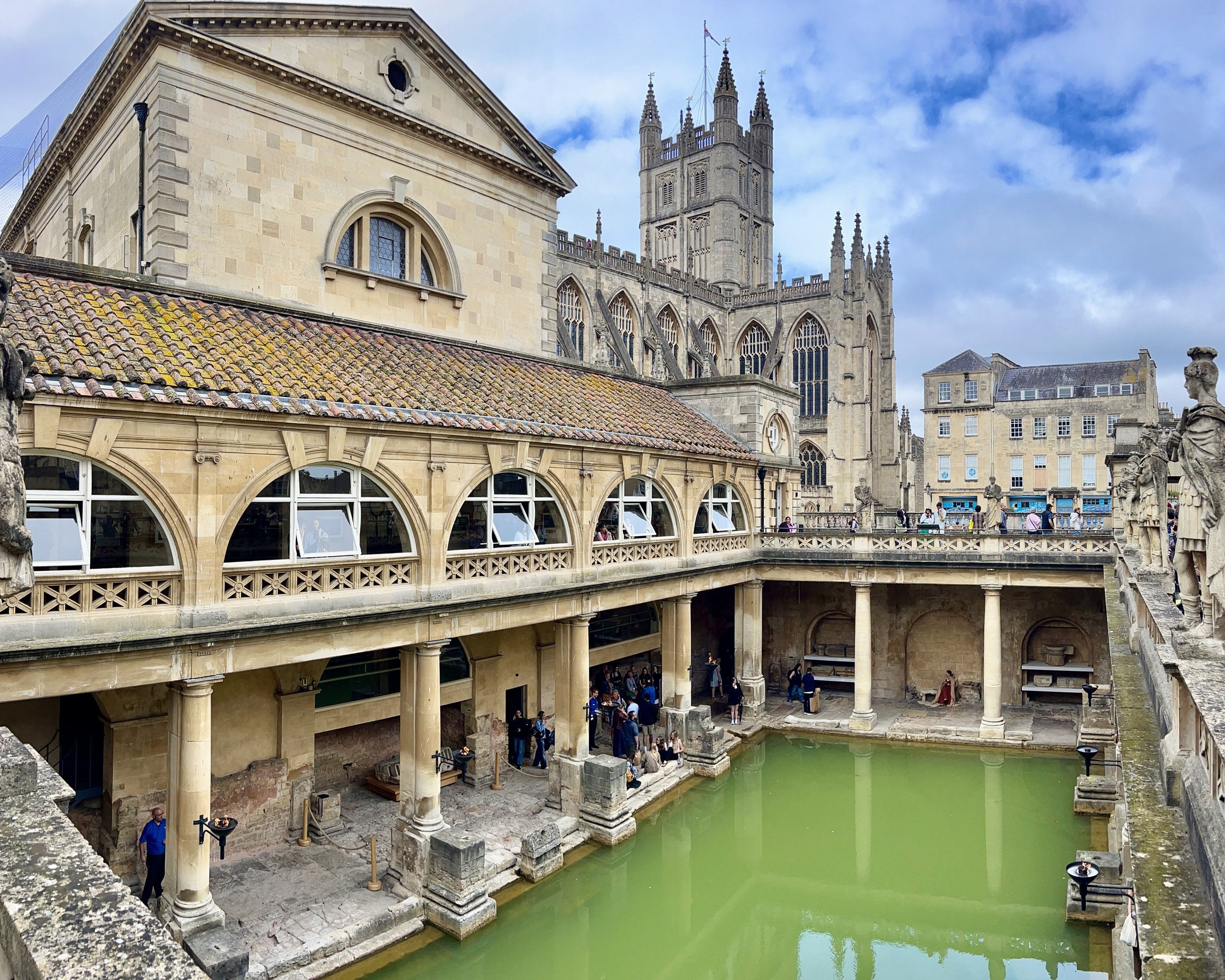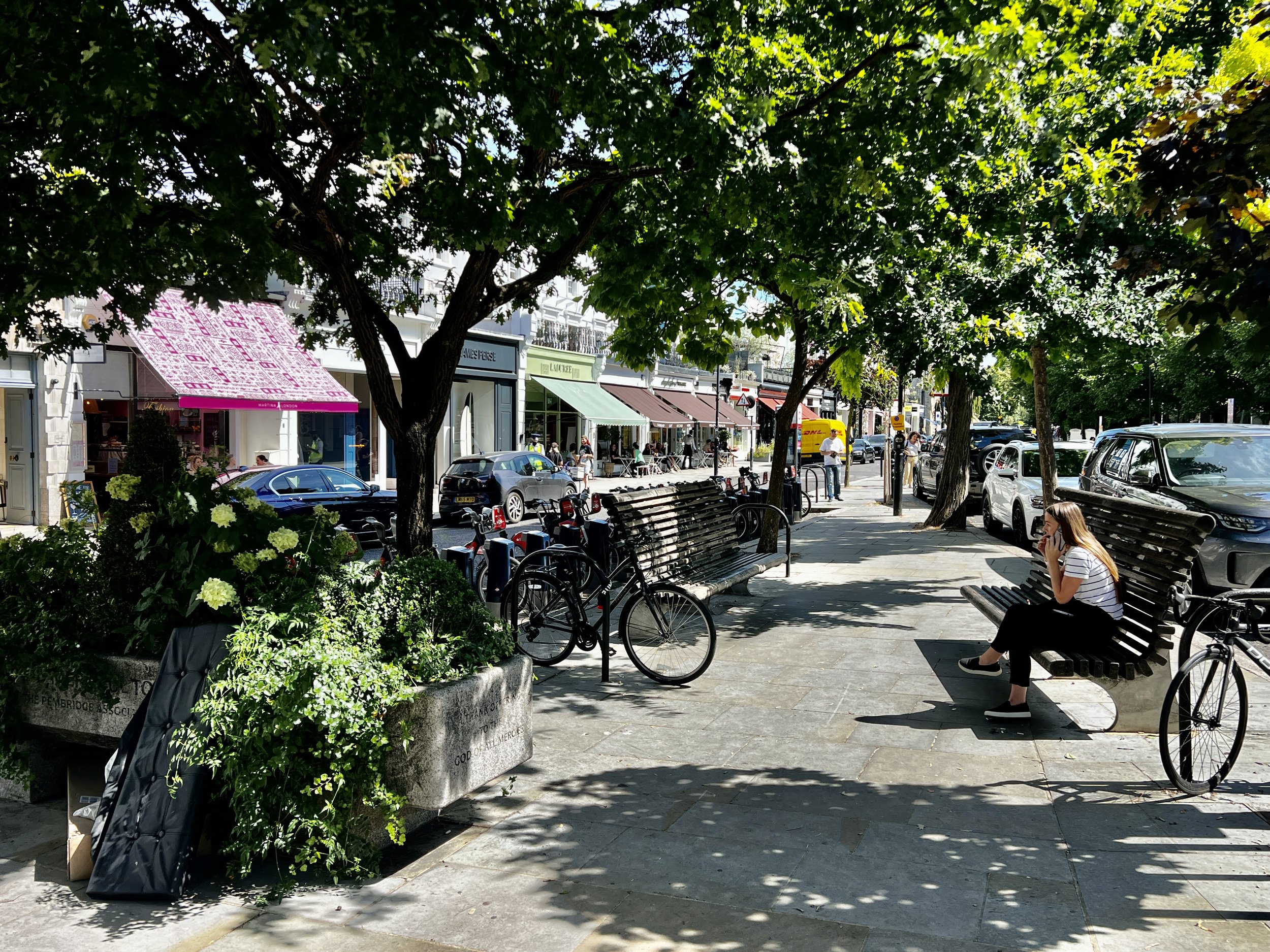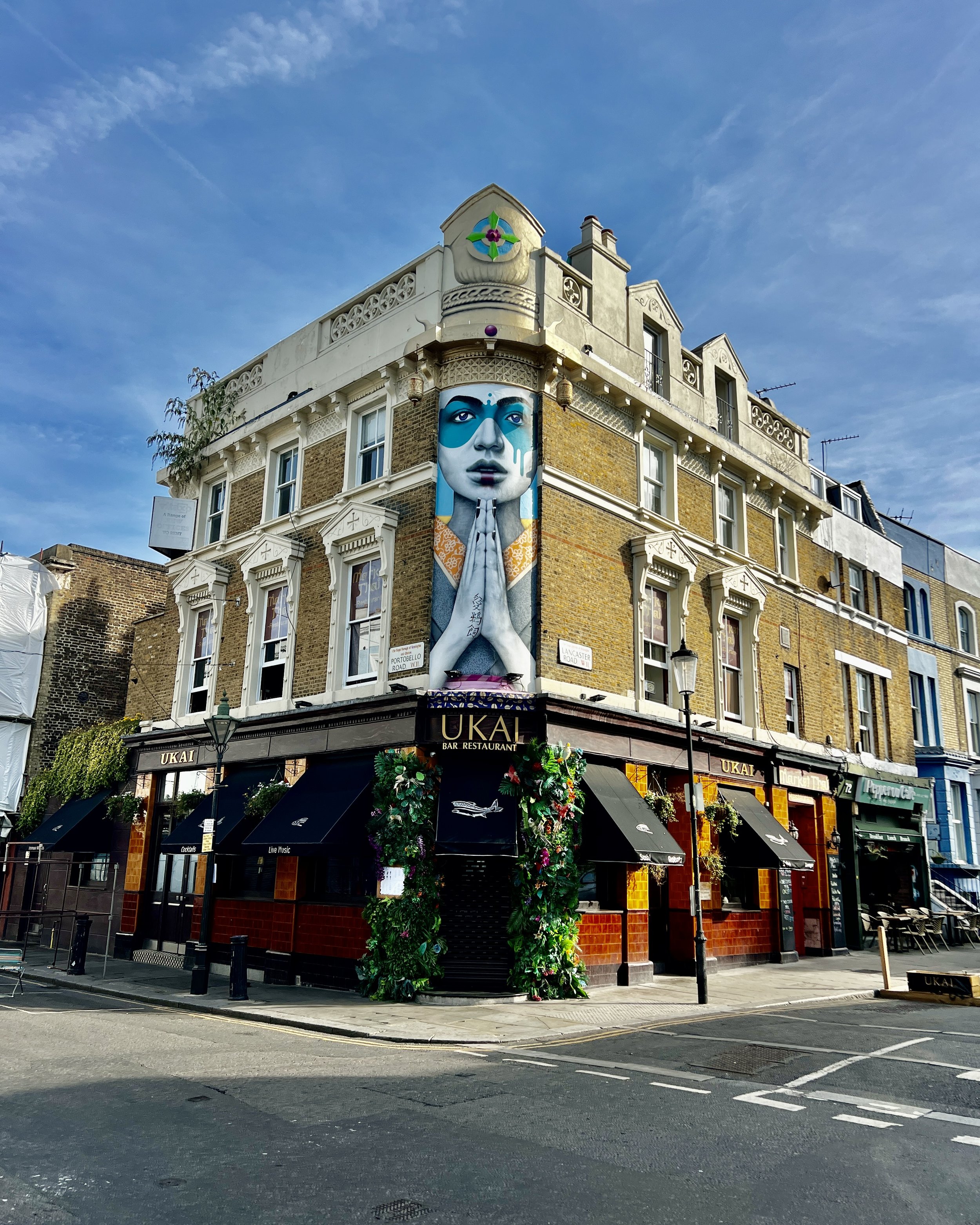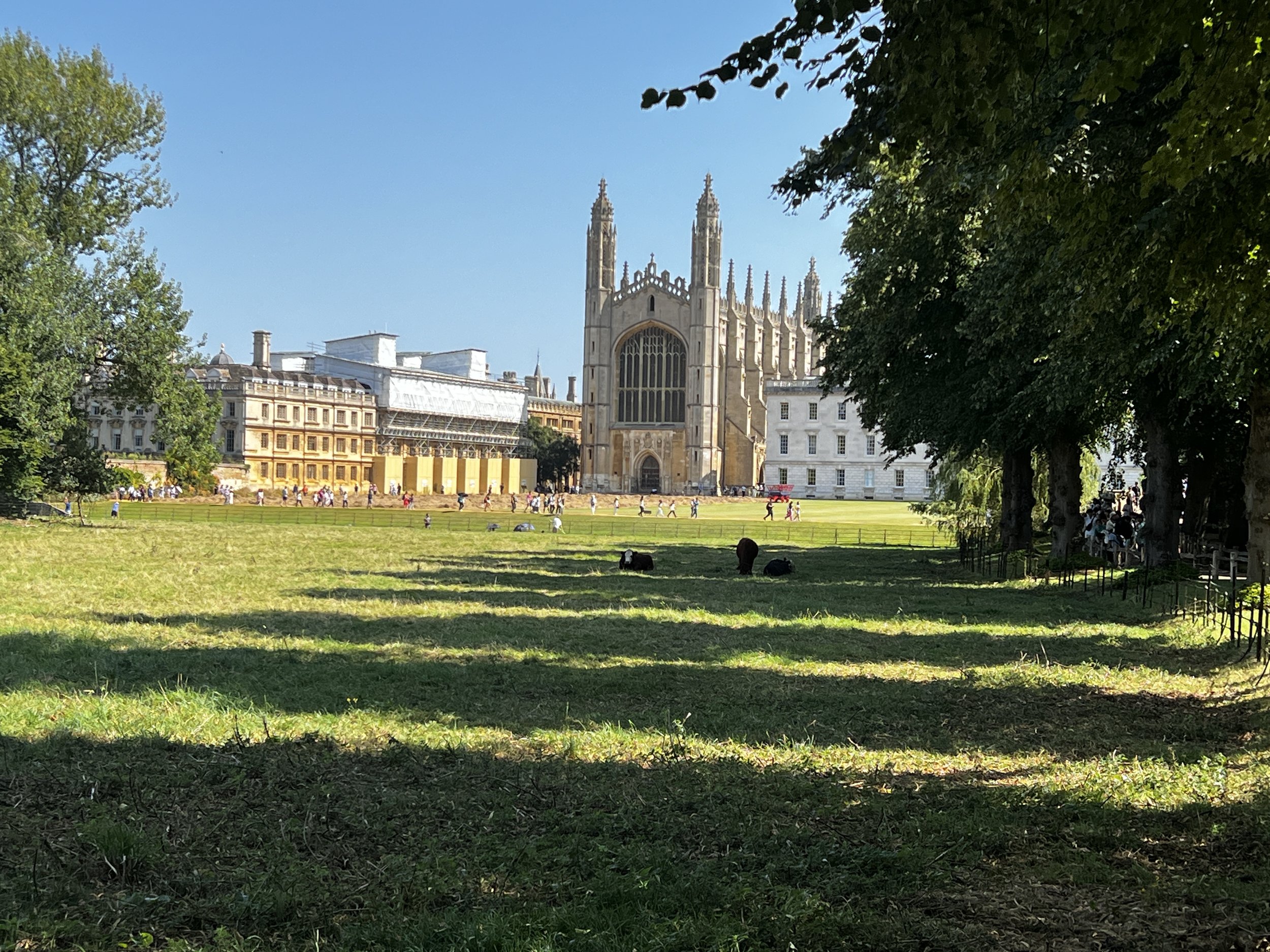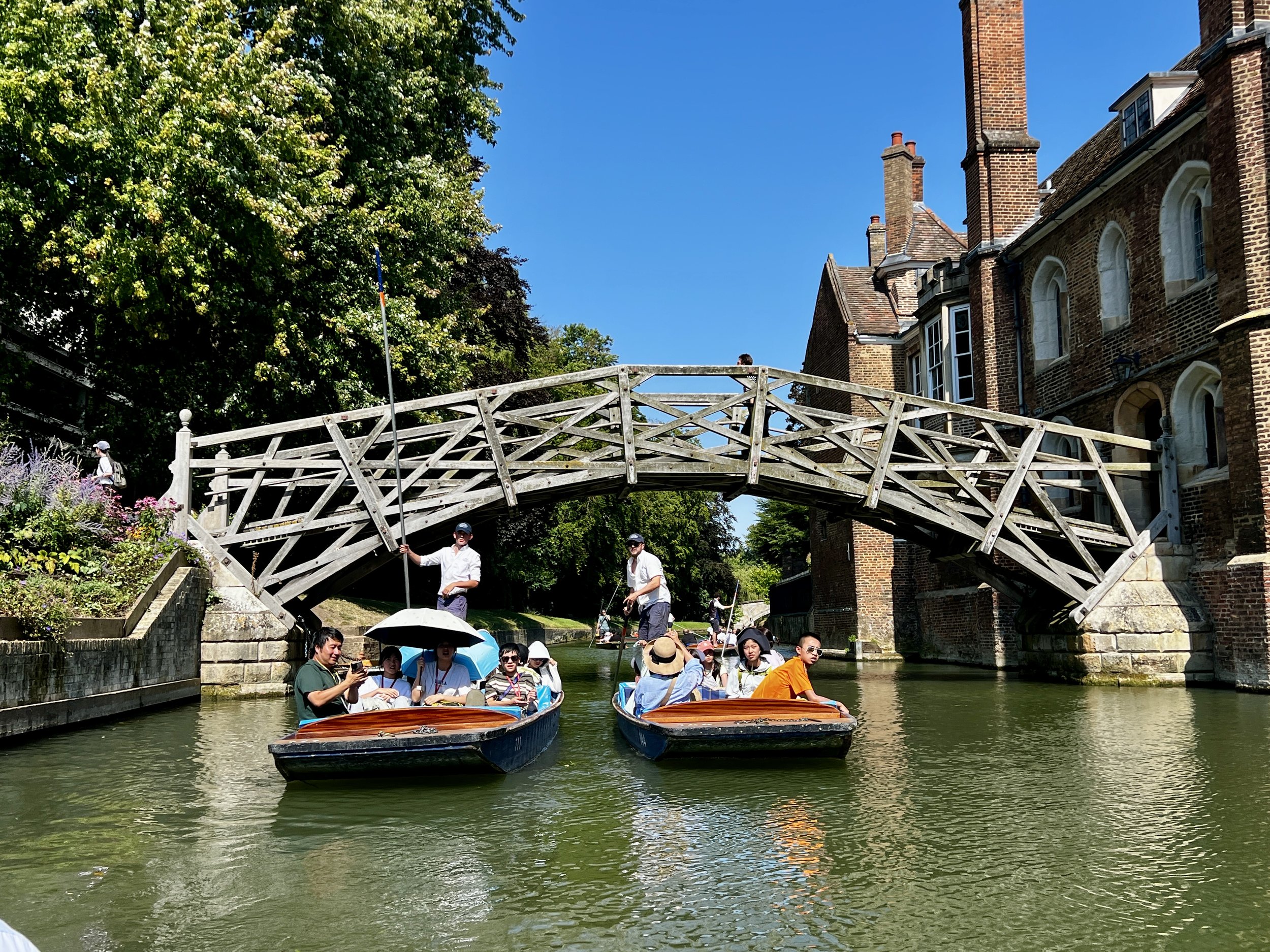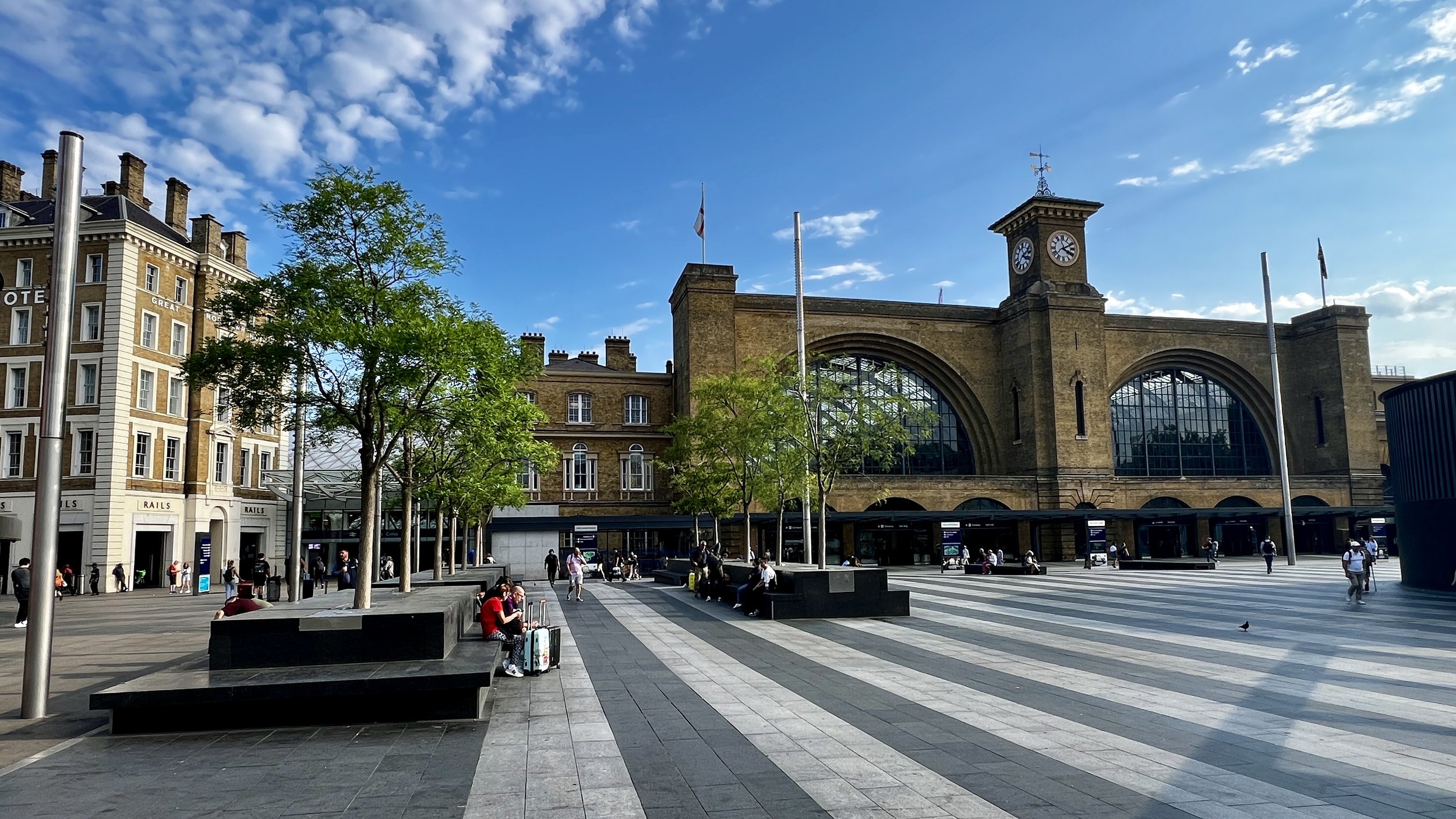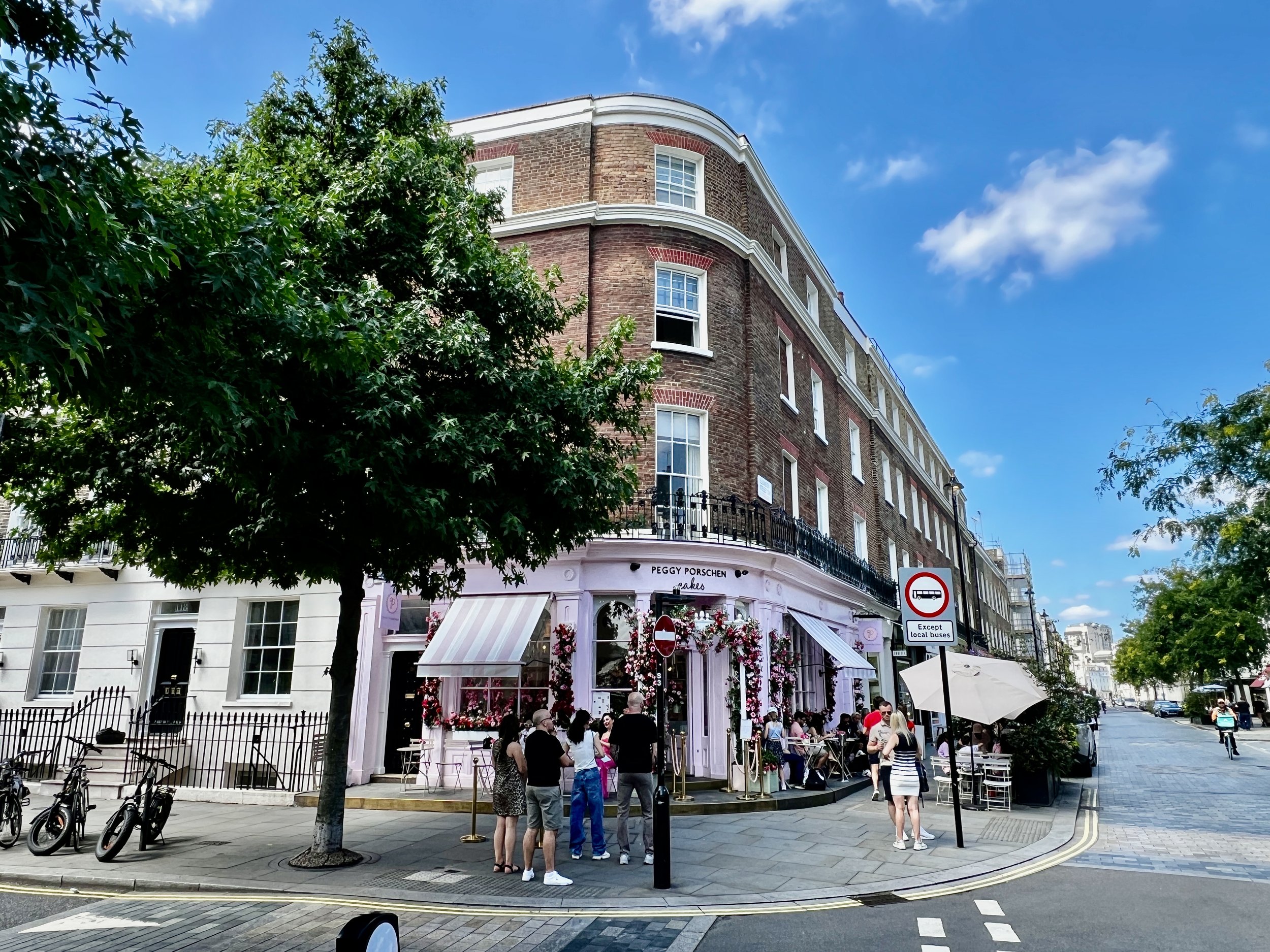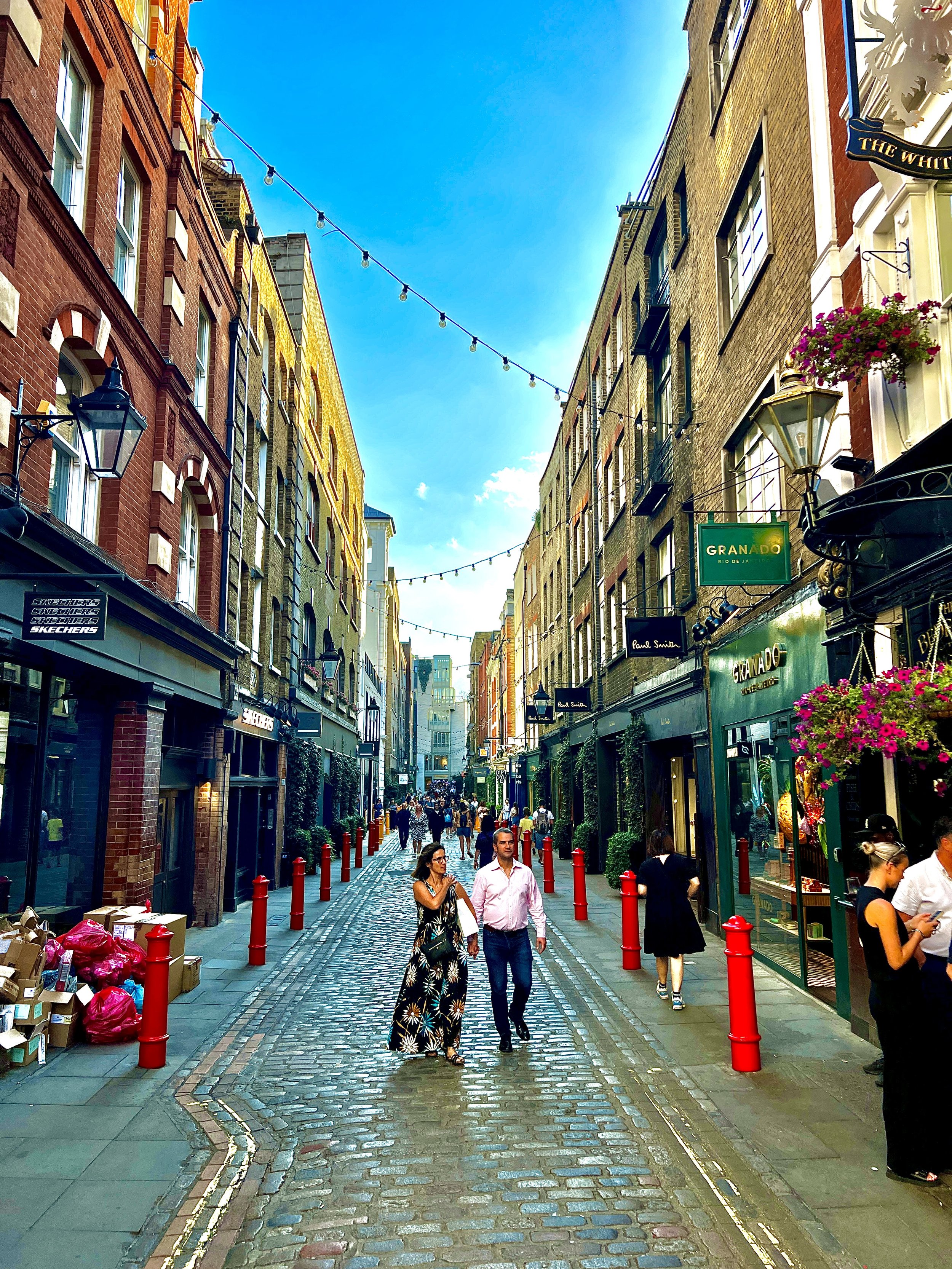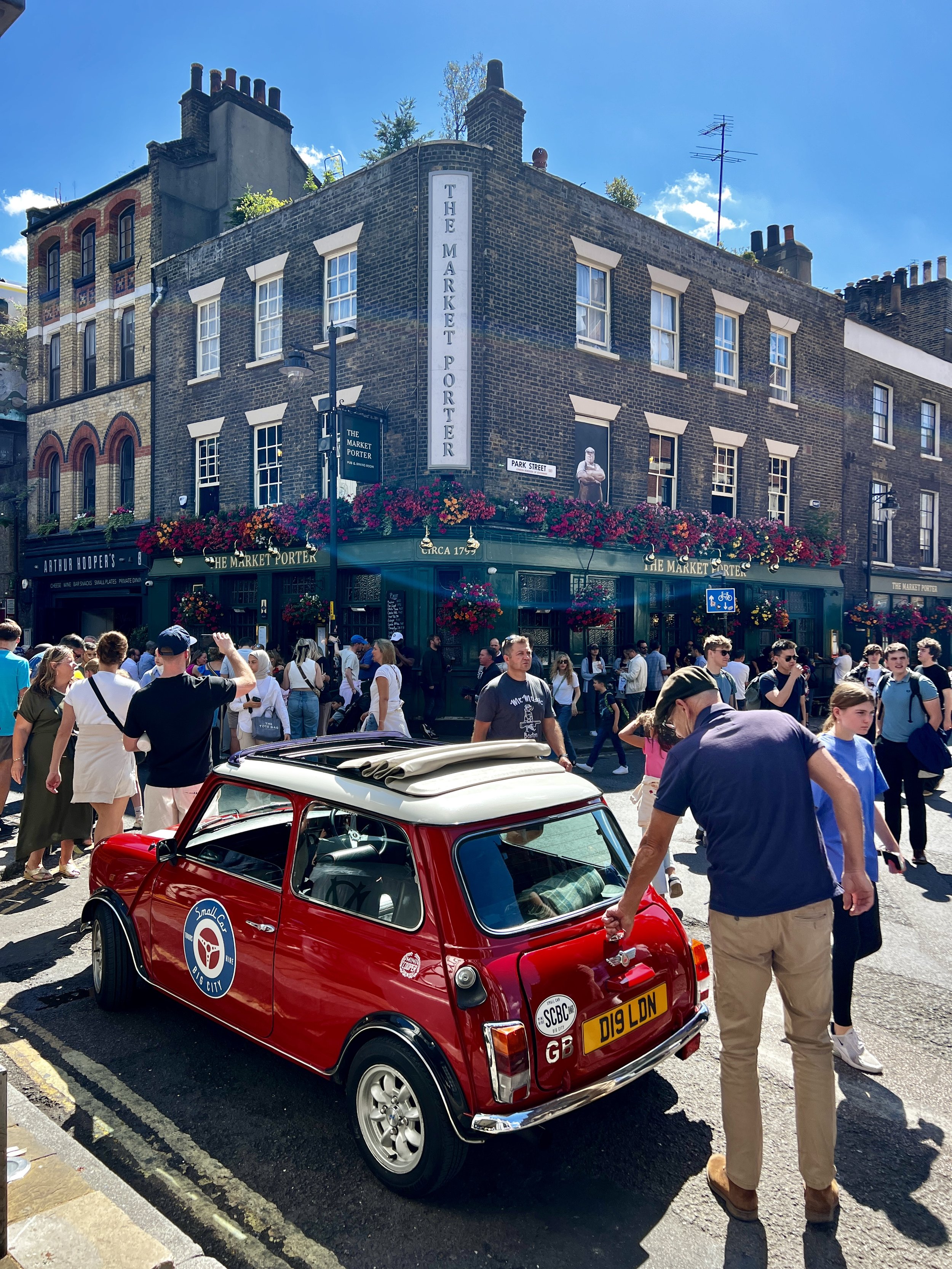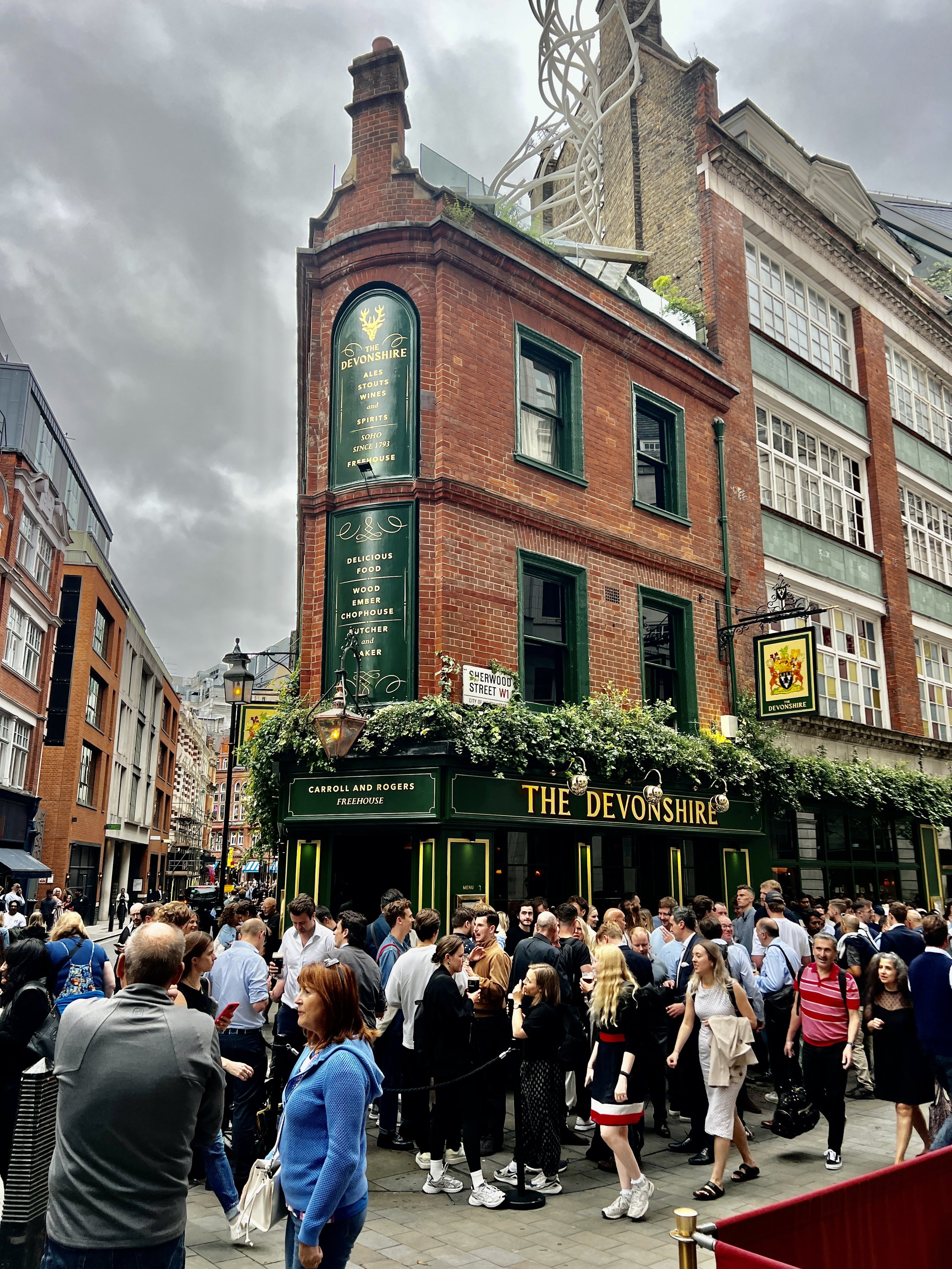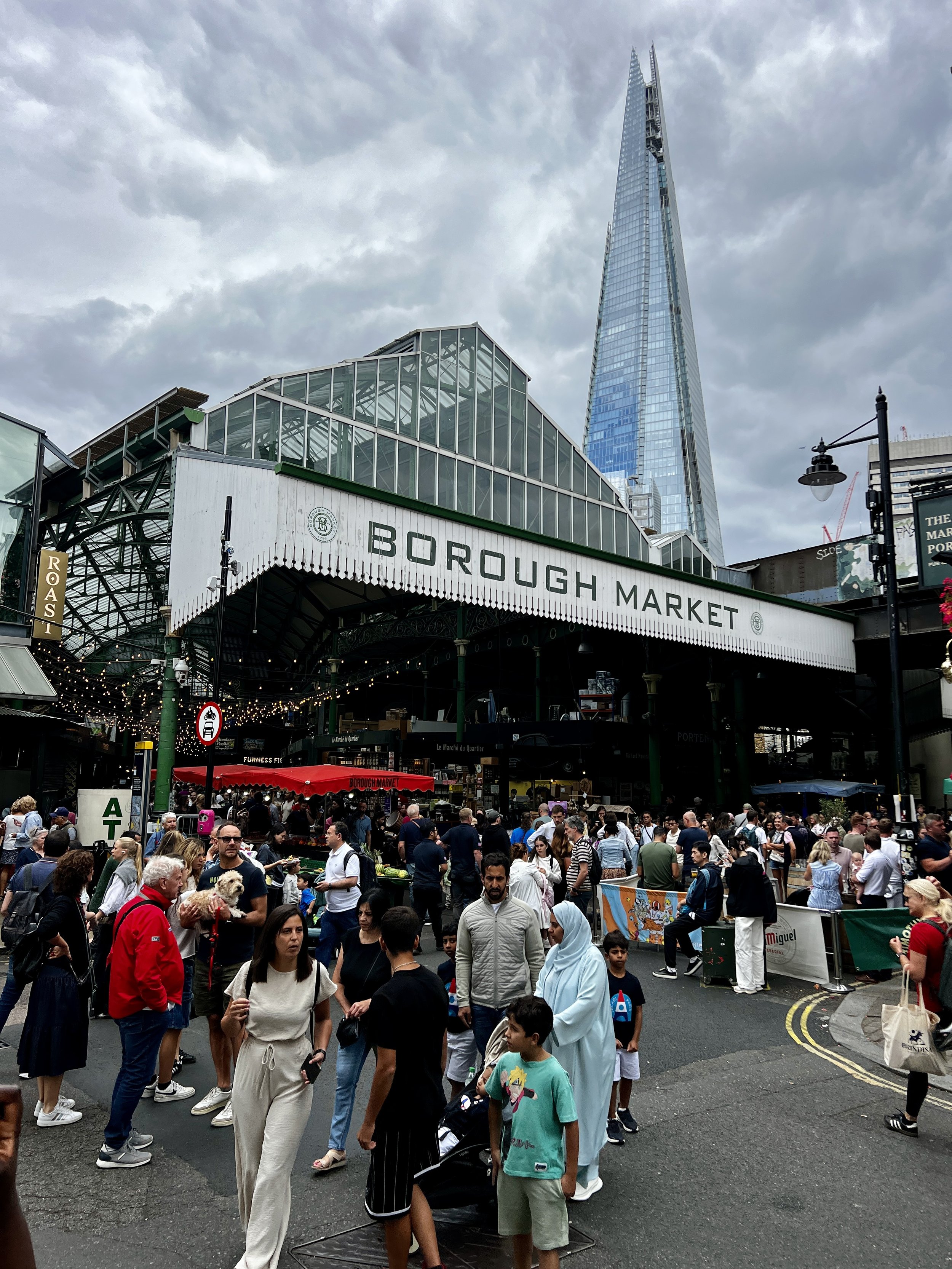Our current built environment which was once meant for people and worked to integrate with nature doesn’t seem to be designed for people or nature anymore. Since the advent of the assembly line and the mass production of the automobile in 1913 the built environment in the United States has changed. These changes did not happen all at once; they have occurred over time in a subtle fashion. These changes have caused a shift in development practices that have moved away from people and nature.
Identifying Authenticity in Placemaking
The summer of 2024 I had the opportunity of spending ten days with my wife in London, England. During that ten-day period, we ran ourselves ragged going from district to district - walking street after street - taking in everything that the time available to us would allow. It was an absolutely amazing trip. I saw and experienced places that are otherwise foreign to me back home in Utah.
During those ten days I found myself inspired and depressed simultaneously. I was inspired by the level of careful attention given to so much of what I saw and experienced. I was inspired by the degree of purposeful intent to preserve, sustain, and rehabilitate buildings as opposed to discarding and removing them due to age and wear. I was inspired by the assemblage of these buildings into legitimate places that attracted activity because people wanted to be in these locations. I was inspired by the ease in which I was able to move from place to place and the opportunity to choose how that movement happened.
The simultaneous depression stemmed from knowing that I would be leaving and returning to an extremely inferior environment to the one that I was experiencing during that window of time in London. The spirit of preserving and enhancing the places I inhabit isn’t as well defined, nor is the willingness to preserve and sustain an option because most of our development in the United States is intended for demolition at the time it’s designed. Our buildings are viewed as depreciating assets that are meant to be torn down and thrown away because they are designed and built for disposal. Because our buildings are disposable there is no assemblage of buildings that delivers places that people want to inhabit just because. When we go places there is a purpose – we arrive, we accomplish the set of tasks associated with being there, and then we leave. There is no desire or interest to linger because there is no draw or interest to do so. When there is the need to travel it requires and demands the use of a prosthetic device that is more commonly known as an automobile. I am fortunate to have the necessary resources to own and operate a car, but what about those that are too young or too old or lack the physical abilities?
Over the course of the last century, we have abandoned practices of placemaking that have eliminated any and every opportunity for authenticity in our development patterns. Our human habitat lacks visual character and interest to the point that our desire to engage what has been built is a chore rather than an experience to be savored.
It is my feeling that authenticity (within the context of placemaking) stems from an environment that is comprehensive in its physical, social, and natural structure:
Physical structure must be diverse - a multitude of building types that allows for diversity in both people and uses. The objective must be to deliver "urbanism" which is a comprehensive, built environment. The opposite of diverse in physical structure would be homogeneous (in my opinion). This type of environment is singular in building type - everything from a neighborhood which emits 4 different house plans with 3 elevations per house plan, to a commercial strip center, to Spa Montage Deer Valley. While each physical structure example is different from the other, they are each homogeneous in their individual nature of providing residential, commercial/retail, and resort/hospitality in their respective uses. All are inauthentic because of this.
Social structure is completely reliant upon physical structure, because without diversity in physical structure inclusivity in social structure is an impossibility. In each of the physical structure examples above the social structure required is exclusive and segregating in its nature. Authentic places require social inclusivity. The counterfeit nature of a majority of our built environment is a contributing factor to the social divisiveness that presently exists - in my opinion. More authenticity would help in reducing the "us -vs- them" mentality. Housing affordability is a component of this.
Natural structure, in regard to authenticity, is when respect is both honored and demonstrated in the creation of human habitat which doesn't completely overrun the natural habitat. Rather, our human habitat is generated by implementation which utilizes natural laws as opposed to ignoring them. A degree of respect is maintained between the two, and in maintaining this balance human beings gain unfettered access to nature by the most natural means possible - using their own two feet! Access to nature is critical because it helps in reinforcing the relationship between God and man. Our human habitat is often generated in a fashion which overruns and dominates nature, thus eliminating the reminders of man's place within the overall system of things.
When comparing physical locations, utilizing the criteria I put forward above, which has authenticity?
A traditional neighborhood
OR
A gated neighborhood
A main street
OR
A mall
Paris, France
OR
Paris on the Vegas Strip
As I searched for these different images it struck me that in each comparison there is another necessary component associated with the delivery of authenticity - TIME. Authenticity demands a respect for time in its ultimate delivery. When time isn't respected inauthenticity - or counterfeits - are the deliverable. This may be the most powerful of all the noted observations in this article!
To further emphasize these points, I want to share a blog article with you that I wrote a number of years ago. The article is entitled, "All We Need to Know About Placemaking can be Found in ...Food?" It is arguably a more difficult concept to identify authenticity when tying it to our built environment, but it is a much easier concept to recognize within the culinary world. The further ingredients get from their original source the less authentic the final product is. The more that time is cheated in the preparation process the less authentic the final product will be. The less attention paid to the atmosphere in which the food is delivered the less authentic the final product can become.
Watch "Chef's Table" on Netflix sometime and contemplate the principles of culinary artistry in relation to placemaking and the principle of authenticity will be understood more holistically, without any further dispute.
Stepping off the soap box - dropping the mic...
An Urbanist’s Manifesto
Much of my adult life has revolved around a personal pursuit of better understanding how our built environment is created and works. In the early periods of this pursuit I didn’t really understand the nature of my chase; though I could define it soon thereafter I still found myself challenged by my ability (or lack thereof) to find the information I was seeking. In the later periods, as I gained access to the information I desired, I sought a universal understanding as to how changes could be made in order to deliver better results than what we have generally experienced to date.
Sprawl
At this time I stand in a place where I can unequivocally say that the current system by which our built environment is planned, designed, regulated, financed, and developed is irreparably broken. There is very little that one can provide, as evidence to suggest otherwise. Approach it from any angle you choose – geographic, economic, political, social, cultural, etc. – your conclusion will point to a system that delivers inferior results that very few, if any, can say they are truly happy with.
Coincidentally, as evidence mounts against how our built environment is presently delivered, there seems to be a general sense of both apathy and ignorance to the facts surrounding this topic. Whether this is purposeful or not is unimportant, because the bottom line is that our margin for error in addressing these circumstances continues to shrink and will at some point compel change, rather than allowing for the option to choose.
With all of this being said, those that do understand where society stands regarding these issues will be able to both see and recognize that within the challenges we face lies a tremendous opportunity for the ‘early adopters’ who are willing to embrace the principles associated with providing enhanced methods for providing URBANISM.
Urbanism (Salt Lake City, UT)
As a general rule, URBANISM can be defined as “a study of the human habitat (built environment), from rural to urban, looking at the influences of geographic, economic, political, social, and culture, and their impacts/effects on the built environment.” I propose that this definition be thought of as a discipline that is undertaken by those who understand the differences associated by the WHAT, HOW, and WHY things are done in delivering better results as opposed to the present practices, which appear to play to the lowest common denominator regardless of the results.
Going a step further, an URBANIST would be an individual who identifies with the aforementioned definition of URBANISM, and has made a personal commitment to abide by the general standards of practice and conduct identified in the Charter of the New Urbanism. Within the principles of this Charter are a set of underlying disciplines that must be taken to heart as the means by which delivered results, relative to out built environment, will be measured. These core beliefs resonate with me on a personal level, and have proven to be a form of conscience with which I measure my professional actions. It is this understanding of URBANISM that has defined me at a deep and intimate level and have made me a self-professed URBANIST!
New Urbanism Transect (Source: DPZ)
It is important to note that one who chooses to wear the label of URBANIST does so regardless of and separate from personal, political or professional affiliation. An URBANIST must be recognized as a generalist – a Polymath. Professionally, an URBANIST may be an architect, planner, engineer, government official, transit manager, developer, financier, etc. Regardless of profession, however, an URBANIST understands that their profession is only a part of a much greater whole that requires the understanding and cooperation of many if greater results are to be achieved.
I AM AN URBANIST! I hope you will choose to be as well.
Defining Urbanism: A Mormon Perspective
““We ought to have the building up of Zion as our greatest object.””
The term “urbanism” is commonly misunderstood and is often associated with high intensity, human environments. While there is a portion of truth to this, it is far from a complete definition. It would be similar to referring to the great Babe Ruth as an overweight baseball player. In order to properly use the term it must be correctly and comprehensively understood. I will attempt to do this, but I don’t want it to stop there. Within the perspective of Mormon theology is a much deeper perspective that I believe is important to share, so that one can also begin to recognize and identify the present impacts of development and placemaking and how they need to be reshaped in order to deliver more effective results in the lives of people.
Babe Ruth
Commonly, dictionaries define urbanism as “the lifestyle of city dwellers.” This is the Babe Ruth definition that I referenced earlier. This definition is far from complete as compared to how a new urbanist would define the word. A new urbanist’s definition would go further by saying that urbanism is “a study of the human habitat (built environment), from rural to urban, looking at the influences of geographic, economic, political, social, and culture, and their impacts/effects on the built environment.” While this definition is more comprehensive in looking at the relationships of these forces on the creation and operation of our places, I believe that this definition still falls short of considering the relationships that do and should exist between people and their places.
I am a student of human ecology which puts forth the observation that there is a definitive link between people and place, and states that our built environment has a fundamental impact on people’s behavior and attitudes. If one takes this to heart than the new urbanist definition of urbanism needs to be expanded, because it does not fully account for the impact that is apparently made at the level of the individual and family. Taking this into consideration creates an opportunity to present the Mormon perspective and potentially come to a complete and comprehensive definition of urbanism.
The presentation of the Mormon perspective of urbanism is rooted in the belief that as spiritual brothers and sisters we must learn to love and care for each other. To do this there is a relationship between people and place that is identified as the pinnacle that should be worked towards. That pinnacle is called – ZION.
Zion is recognized as both a physical place as well as a spiritual state. Both are required in order for Zion to truly exist. Zion is required to first be built spiritually before it can be built physically:
“And Zion cannot be built up unless it is by the principles of the law of the celestial kingdom; otherwise I cannot receive her unto myself.”
Earthly Stewardship
This was part of the intent and goal behind the early Mormon pioneer’s efforts in community building. Their attempts were to establish communities that would be rooted in delivering both the spiritual and physical building of a Zion community. To do this they attempted to master the principles of stewardship and consecration. The principle of stewardship is a sacred spiritual and temporal trust for which there is an attached accountability. It requires the understanding of individual saints that all things are God’s and in turn there is no value in the purpose of accumulating more than another – all should be shared. The sharing can not happen through force as socialism prescribes. Instead, sharing occurs through the consecration of all that one has – including time, talents, means, etc. All is put forward for the purpose of building God’s kingdom, both physically and spiritually on the earth, and this is done at one’s own choosing.
Doctrine & Covenants 104:11-18
“It is wisdom in me; therefore, a commandment I give unto you, that ye shall organize yourselves and appoint every man his stewardship;
That every man may give an account unto me of the stewardship which is appointed unto him.
For it is expedient that I, the Lord, should make every man accountable, as a steward over earthly blessing, which I have made and prepared for my creatures.
I, the Lord, stretched out the heavens, and built the earth, my very handiwork; and all things therein are mine.
And it is my purpose to provide for my saints, for all things are mine.
But it must needs be done in mine own way; and behold this is the way that I, the Lord, have decreed to provide for my saints, that the poor shall be exalted, in that the rich are made low.
For the earth is full, and there is enough and to spare; yea, I prepared all things, and have given unto the children of men to be agents unto themselves.
therefore, if any man shall take of the abundance, which I have made, and impart not his portion, according to the law of my gospel, unto the poor and the needy, he shall, with the wicked, lift up his eyes in hell, being in torment.”
Through the efforts of implementing proper stewardship and consecration, one learns to both love and serve his fellow “brothers and sisters” in the same fashion that Jesus Christ did during his earthly ministry.
This is much easier said than done however. We live in an environment that teaches us otherwise. This physical, social and cultural environment is instead teaching principles of individualism, independence, exclusivity, and selfishness. The contrast between the two is alarming. Zion teaches us that we should be ONE, while the world is teaching us to think we are THE ONE!
…I say unto you, be one, and if ye are not one ye are not mine.
“Nordstrom” kids -vs- “Wal-Mart” kids
This attitude, while more easily identified on the social side of the equation, carries over dramatically to the physical – with astoundingly disturbing effects. At present, much of the way we live is in homogeneous, segregated neighborhoods that reinforce differences between people suggesting that it is wrong to intermingle. I have actually heard, with my own ears, individuals say in public meetings that they don’t want THOSE PEOPLE to live too close to them. I mean come on – we certainly can’t allow those Wal-Mart kids to play with those Target kids – and heaven forbid the thought of either playing with a Nordstrom kid!
The relationships between people and place must be better understood in order to produce the kind of urbanism that will make a much deeper and lasting impact. The places we create can and do have an impact on people both socially and culturally. There is no escaping this. The degree to which our places impact people socially and culturally, there will also be a direct impact on the spiritual nature of people. I believe that in recognition of these points one can become more cognizant of how to more positively impact these relationships. If the spiritual can lead, rather than being lead, the physical can be impacted in a fashion that social and cultural are more positively impacted.
““Only a Zion people can bring in a Zion society.
And as the Zion people increase, so we will be able to
incorporate more of the principles of Zion until
we have a people prepared to receive the Lord.””
Community Building and Natural Law
Healthy cell growth
I was once part of a discussion with like-minded work colleagues regarding the place and role of community building within the context of a landowner. As we discussed the associative responsibilities of this role one of my colleagues shared an analogy that I immediately gravitated towards. He presented the idea that community building needed to better follow natural laws in order to function in cooperation, rather than competition, with nature. He used the analogy of cell growth in a healthy, living organism. A healthy cell will only expand to a point of sustainability – taking only what it needs.
He then made the comparison of unhealthy cell growth and its parallel to community building. Without giving away the punchline too prematurely in the comparison to the parallel my colleague made, I first want to share a quote from a book called Life’s Operating Manual that immediately came to mind when the unhealthy cell comparison was made:
“Life, or nature, began on this planet some four billion years ago. In those four billion years, a law has become evident that is immutable and true; in fact, all biological systems that thrive in the long run obey this law; all systems that violate this law will eventually die off. Here’s the law: nothing in nature takes more than it needs…
“Contrary to what we have been taught, cooperation, not competition, is the ruling order of nature…
Cancerous cell growth
“Tragically, mankind, with our unchecked appetite for more, violates this law every day. We are encouraged and even rewarded for taking as much as we can, a philosophy that has had catastrophic consequences…
“Ironically, we understand well just how deadly an organism can be that grows without limits. In fact, we have a term for cells in the body that take more than their share – we call those cells cancer. And if we persist in this unchecked behavior, we will inevitably succumb to the same fate of all cancerous cells: we die off.”
The principle to be understood in framing the discussion I had with my colleagues is this – natural laws associated with the “operating system” of this earth require balance. One should only take what one needs - and no more. When the law of balance isn’t followed, the system breaks and eventually will die – cancer being the example identified in the quote as well as the example used by my work colleague.
Human beings, on the other hand, do not follow this law as the quote above eludes. We are at a severe imbalance in the way we operate within the natural systems that we should instead be cognizant of and subject to. Human beings have the ability (because of free will) to act outside of natural laws, especially in the present, where technology has reached a point that we aren't as reliant on or accountable to keeping nature’s laws for purposes of survival. We have collectively learned to work outside nature's operating system, and have been rigorously doing so for almost a hundred years.
What jumped out at me when my colleague made this parallel comparison was the tie back to community building. Enough study and analysis has been conducted to be able to indisputably identify that current development practices are as far from the natural law of balance as one can get. We are presently taking far more than we need, putting us in direct competition with nature. By definition, this would mean that our current practices (popularly referred to as sprawl) are directly equated to cancer. One widely accepted definition of sprawl is the consumption of land (through development) at a level that exceeds population growth – sound familiar?
Human beings are the author of the sprawl “operating system” which emits cancerous outcomes. This correlation led to a remembrance of a scene from the movie The Matrix, which paints another picture of a destructive natural corollary:
“I’d like to share a revelation that I’ve had during my time here. It came to me when I tried to classify your species and I realized that you’re not actually mammals.”
“Every mammal on this planet instinctively develops a natural equilibrium with the surrounding environment. But you humans do not. You move to an area and you multiply and multiply, until every natural resource is consumed. The only way you can survive is to spread to another area.”
“There is another organism on this planet that follows the same pattern. Do you know what it is? A virus. Human beings are a disease…A cancer of this planet. You are a plague... And we are the cure.”
Source: DPZ
In order for communities to function and work effectively they must be planned and designed in a manner that is consistent with the laws exhibited by nature. When this occurs, cooperation with nature is better achieved and competition with is minimized or eliminated. Human beings are a part of the natural world and must act in accordance with that understanding. Our collective survival, as a human family, is dependent upon this. As much as we may want or try to disconnect from this relationship we are merely burying our figurative heads in the sand.
Nature teaches us all that we need to know in order to build communities that will respect natural laws, while also enhancing the lives of those who live within them. It really falls on us collectively to make this happen. Author Henry Miller emphasized this relationship very well when he wrote:
“The world is not to be put in order; the world is in order.
It is for us to put ourselves in unison with this order.”
Respecting Land in the Development Process
For thousands of years, it was required of human beings to live in harmony with nature. Nature’s laws governed human behavior. If those laws weren’t followed, then human lives were lost. It has only been within the past couple hundred years that the attitudes towards nature’s laws have changed. With scientific discoveries, improving engineering practices, and industrialization human beings have begun exhibiting behavior which suggests they know better. The paradox in this collection of attitudes is that the rules have not changed, but the stakes are now much higher regarding the blatant disobedience to nature’s laws.




